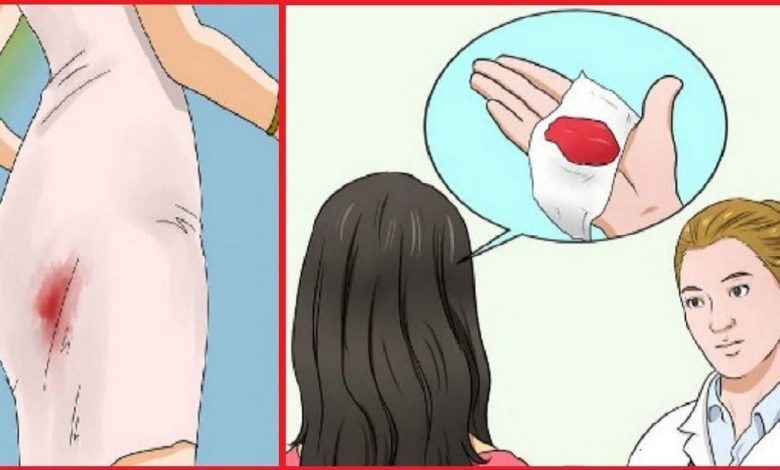Vaginal bleeding between periods: what is this, causes, symptoms, diagnostics, treatment, prevention

Vaginal bleeding between periods; Bleeding between periods; Intermenstrual bleeding; Spotting; Metrorrhagia
Vaginal bleeding between periods is a condition, in which a woman experiences vaginal bleeding outside of her regular menstrual cycle. This type of bleeding can be caused by a variety of medical conditions and can be worrisome..
Causes of vaginal bleeding between periods
There are many potential causes of vaginal bleeding between periods., including:
- Hormonal Imbalance: Hormonal Imbalance, eg, occurring during perimenopause or menopause, can cause vaginal bleeding between periods.
- Polyps or fibroids. Polyps or fibroids in the uterus can cause vaginal bleeding between periods.
- STD: disease, Sexually Transmitted Infections, such as chlamydia or gonorrhea, can cause vaginal bleeding between periods.
- Cancer: Uterine cancer, cervix or ovaries can cause vaginal bleeding between periods.
Symptoms of vaginal bleeding between periods
In addition to vaginal bleeding between periods, people with this condition may experience other symptoms, such as abdominal pain, discomfort during intercourse or increased discharge. The amount and duration of bleeding can also vary and can be mild or severe..
Diagnosis of vaginal bleeding between periods
The diagnosis of vaginal bleeding between periods is usually made on the basis of individual symptoms and medical history..
The doctor may conduct a medical examination, including gynecological examination, to check for signs of underlying diseases. In some cases, additional tests may be needed to identify the underlying cause of the bleeding., such as Pap smear, Ultrasound or biopsy.
Treatment of vaginal bleeding between periods
Treatment for vaginal bleeding between periods depends on the underlying cause. Hormonal imbalances can be treated with hormone therapy, while polyps or fibroids may require surgery. STDs can be treated with antibiotics, and cancer may require chemotherapy, radiation or surgery.
Home Treatment for Vaginal Bleeding Between Periods
There are several steps, what people can do at home, to manage symptoms of vaginal bleeding between periods, including:
- Maintaining good hygiene: wiping from front to back after going to the toilet and wearing clean, breathable underwear can help reduce the risk of infection and discomfort.
- Avoid harsh soaps and detergents: harsh soaps and detergents can irritate the vaginal area and make symptoms worse, so these should be avoided.
- Taking over-the-counter painkillers: over-the-counter painkillers, Taki how ibuprofen, can help manage discomfort and reduce inflammation.
Prevention of vaginal bleeding between periods
There are several steps, what people can do, to reduce the risk of vaginal bleeding between periods, including:
- Practice safe sex: condom use and regular testing for STIs can help reduce the risk of STDs, which can cause vaginal bleeding between periods.
- Maintaining a healthy weight. Maintaining a healthy weight may help reduce the risk of hormonal imbalances and other health conditions., which can cause vaginal bleeding between periods.
- Regular checkups: regular gynecological check-ups can help identify and treat underlying conditions, which can cause vaginal bleeding between periods.
In conclusion, vaginal bleeding between periods can be a cause for concern and can be caused by a variety of underlying conditions, including hormonal imbalance, polyps or fibroids, STDs and cancer.
Treatment depends on the underlying cause and may include hormone therapy, surgical intervention, antibiotics or chemotherapy. Maintaining good hygiene, avoiding harsh soaps and detergents and taking over-the-counter pain relievers, people can help manage symptoms of vaginal bleeding between periods.
Regular checkups and practicing safer sex can also help reduce your risk of developing this condition..
If you experience vaginal bleeding between periods, it is important to seek medical attention, to determine the underlying cause and get the proper treatment.
Early diagnosis and treatment can help prevent more serious complications and improve overall health..
Used sources and literature
Find SE. Physiology and pathology of the female reproductive axis. In: Melmed S, Auchus RJ, Goldfine AB, Koenig RJ, Rosen CJ, eds. Williams Textbook of Endocrinology. 14th ed. Philadelphia, PA: Elsevier; 2020:chap 17.
Ellenson LH, Pirog EC. The female genital tract. In: Kumar V, Abbas A.K, Aster JC, eds. Robbins and Cotran Pathologic Basis of Disease. 10th ed. Philadelphia, PA: Elsevier; 2020:chap 22.
Ryntz T, Lobo RA. Abnormal uterine bleeding: etiology and management of acute and chronic excessive bleeding. In: Lobo RA, Gershenson DM, Lentz GM, Crazy FOUR, eds. Comprehensive Gynecology. 7th ed. Philadelphia, PA: Elsevier; 2017:chap 26.
Singh V, Mishra B, Sinha S, Agrawal S, Thakur P. Role of saline infusion sonohysterography in infertility evaluation. J Hum Reprod Sci. 2018;11(3):236-241. PMID: 30568352 pubmed.ncbi.nlm.nih.gov/30568352/.
